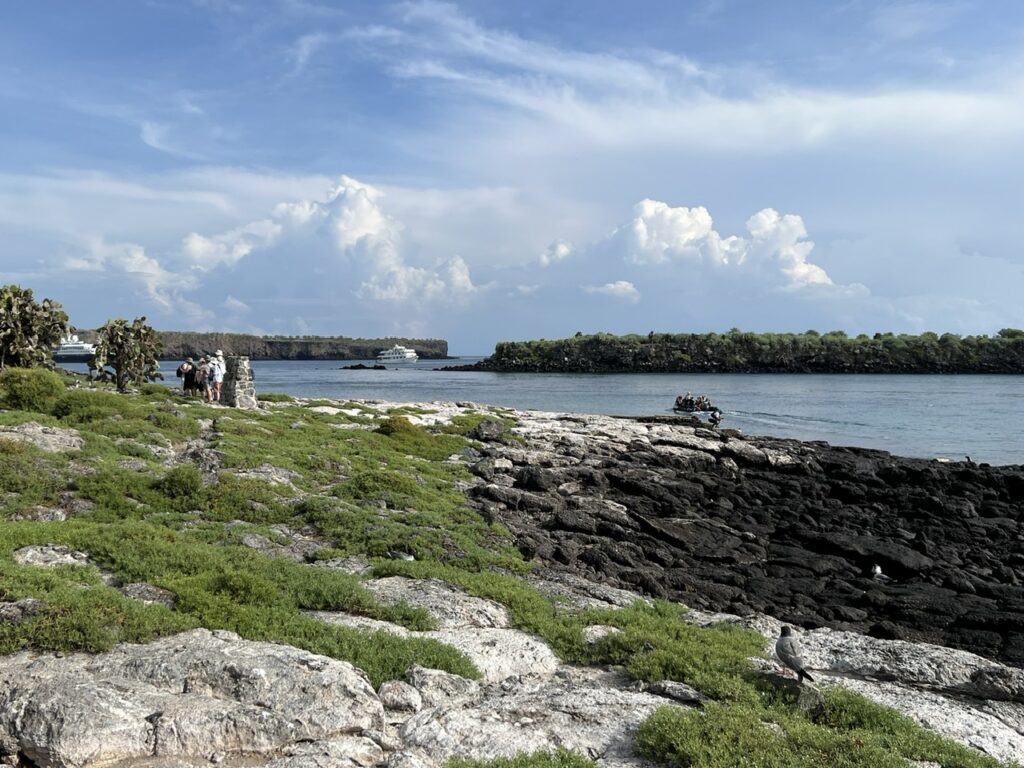
We make a dry landing on South Plaza Island at 08.00. It is overcast but that does not mean that is not hot or humid. The path is rocky and we initially make our way uphill. This is the leeward side of the island and and there is not a breath of wind. The flora on this island is very different. There are low-growing drought resistant plants with yellow and tiny pink flowers.


There is lots of low lying cover here and fan-tailed gulls are nesting. It is incredible to be able to be so close to them and I spend time photographing this cute and demanding chick and its mum.



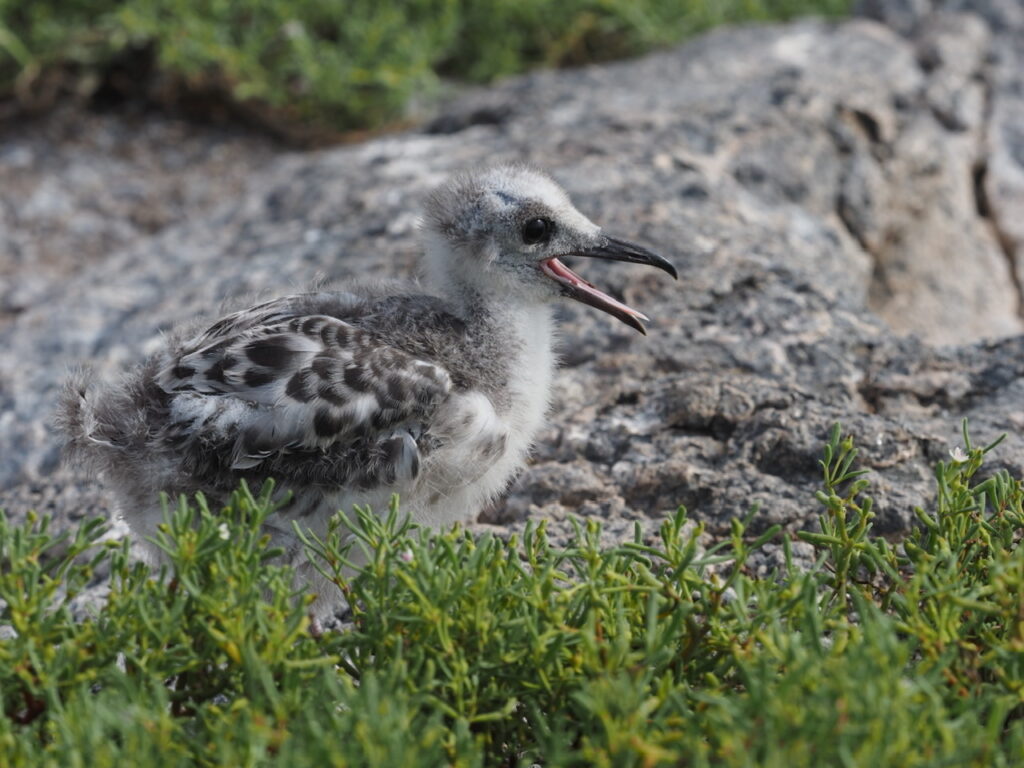



There are scrubby shrubs and giant cactus trees, some of which are probably at least 200 years old. The cactus only grow an inch a year.

Some are in flower and others bear fruit.

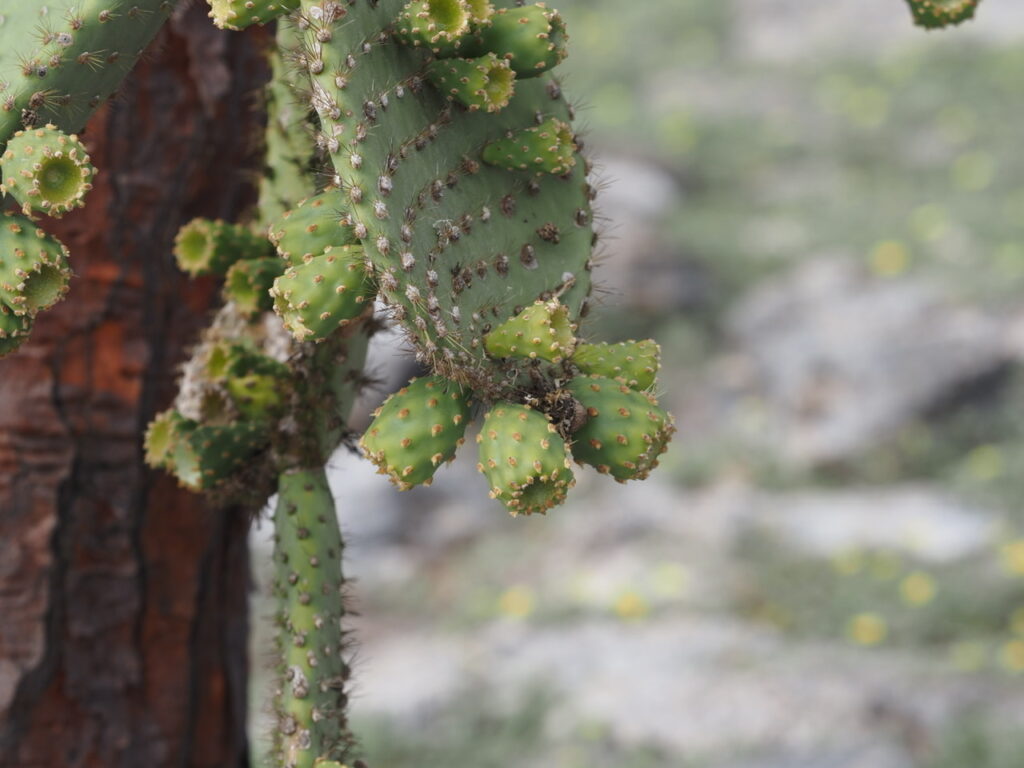
The island had rats which competed for food with the land iguanas. The rats ate the prickly pears and digested the seeds meaning that new cacti were not establishing themselves. A large area has now been re-planted and the cacti are protected by wire cages. The rats have also been eradicated too and the island is gradually recovering.

The views are magnificent but we are all starting to overheat and sweat trickles freely down my face, unable to evaporate and cool me. I drink copious amounts of water to try and stay hydrated. We walk over a lava flow that looks man made. It is white and shiny but just formed from a different substance form the original flow.
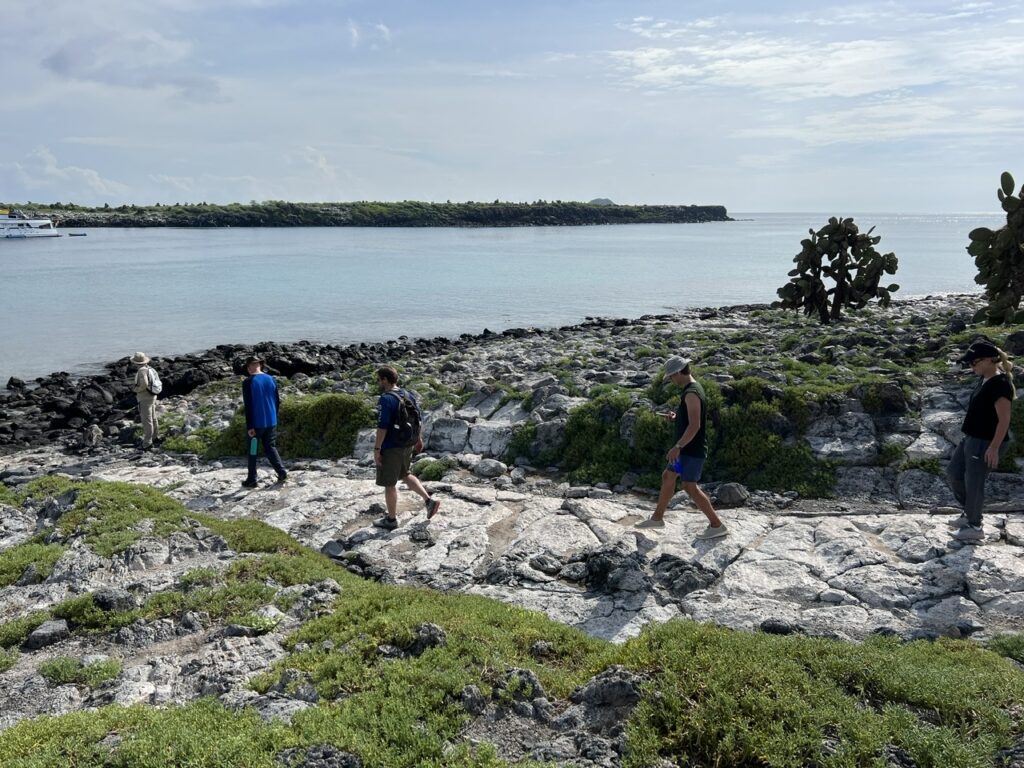
We see iguanas that are a cross between marine and land iguanas and only occur on this island. They like to eat the guava fruit and yellow flowers.

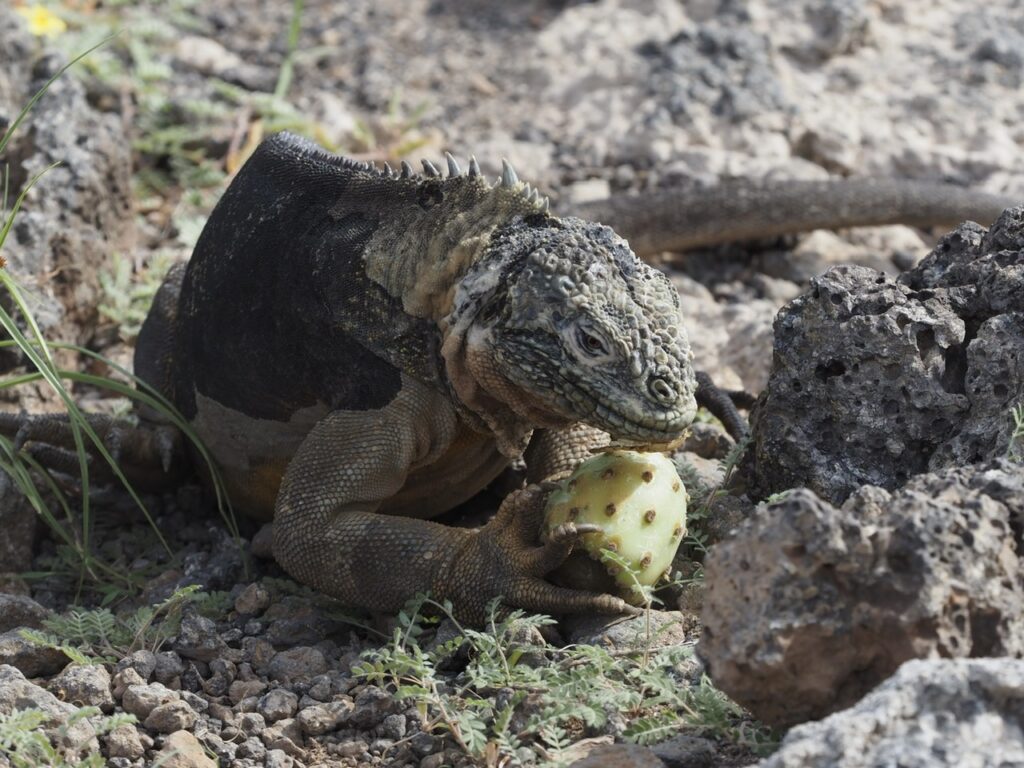


Bees abound and love the little yellow flowers…

… and crabs seem to enjoy the flora too.

We reach the crest of the island and relief; a breeze. Luxury as we feel our bodies gradually start to cool. We stand on top of the cliffs, savouring the cooling air current and watch tropic birds circling below us, before flying into their nests on the cliffside.


We return to Solaris and while we sail to our next island, Fabian gives us a talk about the ocean currents and effects on the water temperature and marine life. It is interesting. The Galápagos Islands sit on the meeting point of several currents resulting in five distinct environments and a huge range in water temperature between areas and seasons. This explains the huge variety and richness of the ocean here.


He then shows us a video he has made over the last five years of all the marine life that he has seen. It is exceedingly good and I tell him he should put it on You Tube. He would receive a lot of views for sure.
In the afternoon, we anchor at Santa Fe Island and snorkel. It is absolutely magical. Sea lions abound and seem to be everywhere around us. They play with sticks, pebbles, feathers and leaves. They turn somersaults and zoom between us. We stay with them for 20 minutes or so before continuing to the nearby reef. I have loads of video and have taken some stills from it – not the best quality but it gives a little taste of what we saw.






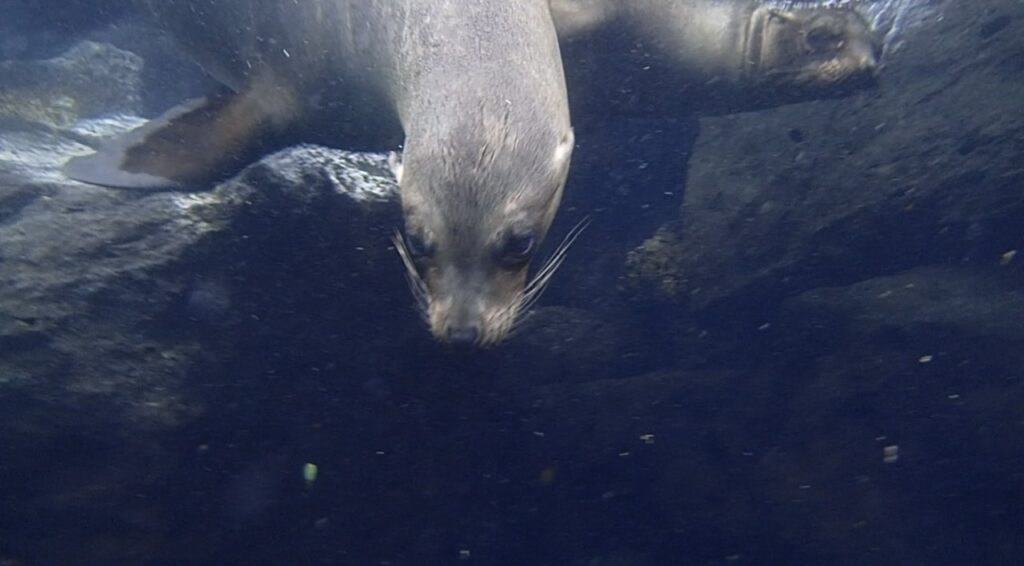





Fish are bountiful too and huge shoals swim below us. It does not seem possible that everyday we have a new encounter that tops the day before. For sure these islands are very special indeed and no two islands that we have visited have been the same.
We have half an hour to dry off and change before making a wet landing on the beach. The beach is well populated with sea lions – the most we have seen in one place. It is actually quite difficult to exit the water and walk up the beach without treading on one. There are lots of pups suckling and large males guard their harems. Even the path from the beach is blocked by sleeping sea lions that honk noisily at us as we disturb their rest.



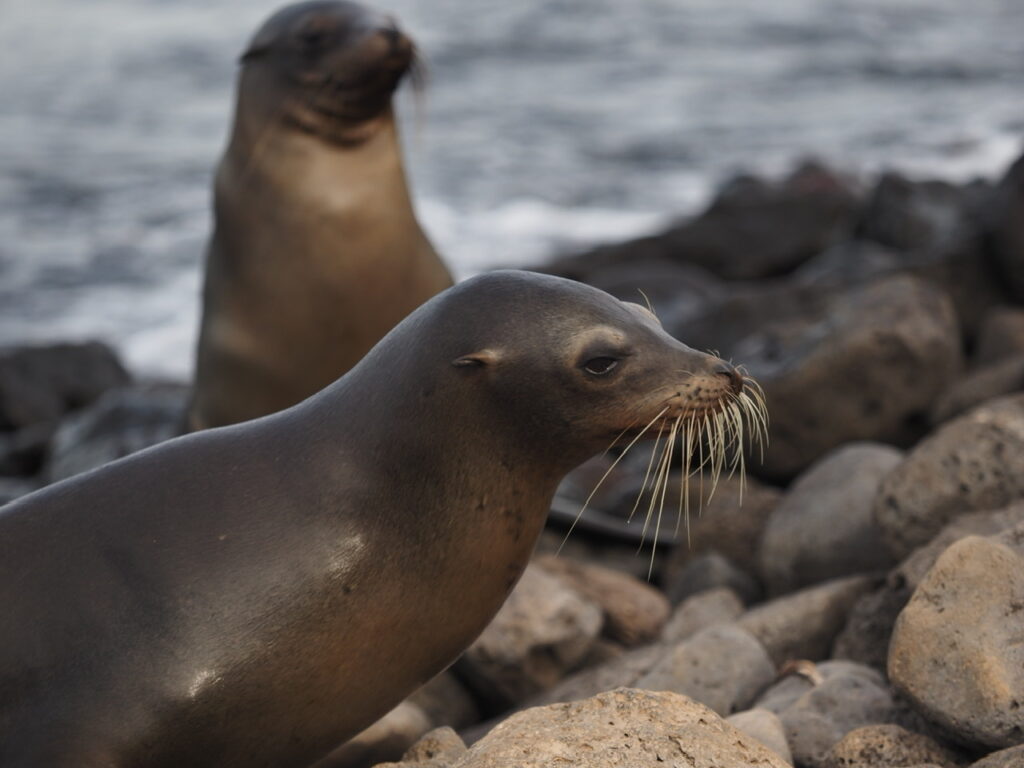





We don walking boots for the rocky trail across the island where we are hoping to find the Santa Fe land iguana and the Galapagos hawk. Although the sea lions are stealing the show somewhat, there are still birds present. Pelicans sit on the rocks and watch the sea lions warily.

Mockingbirds sing loudly in the bushes as we pass by and a blue-footed booby poses on the rocks.
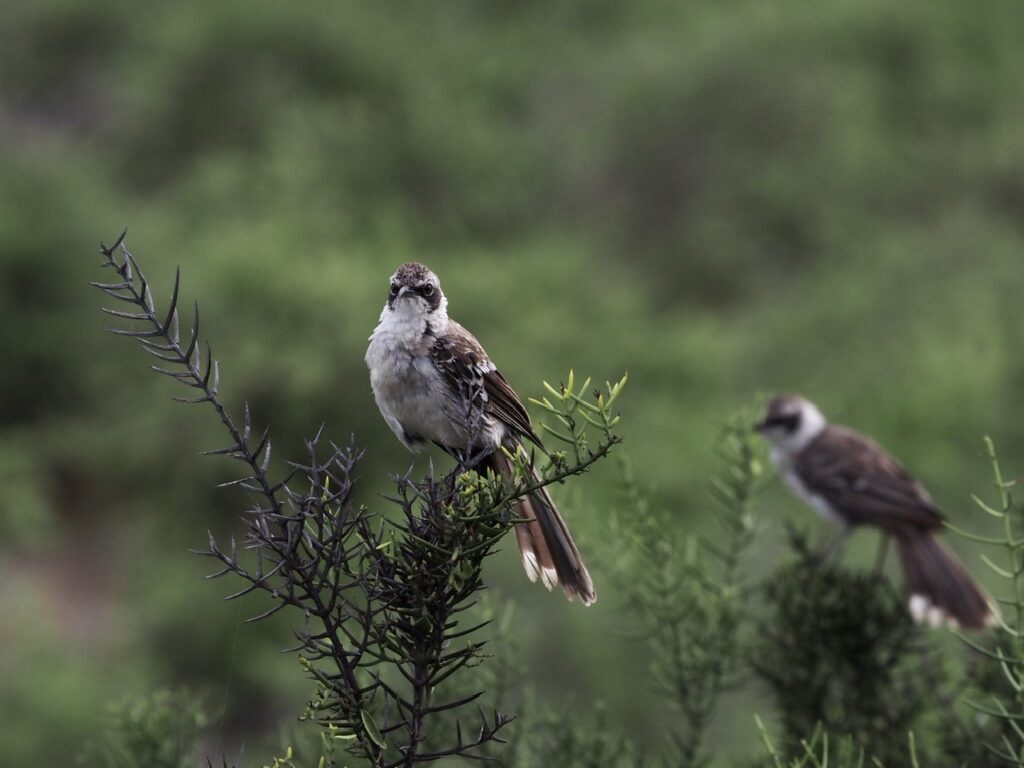
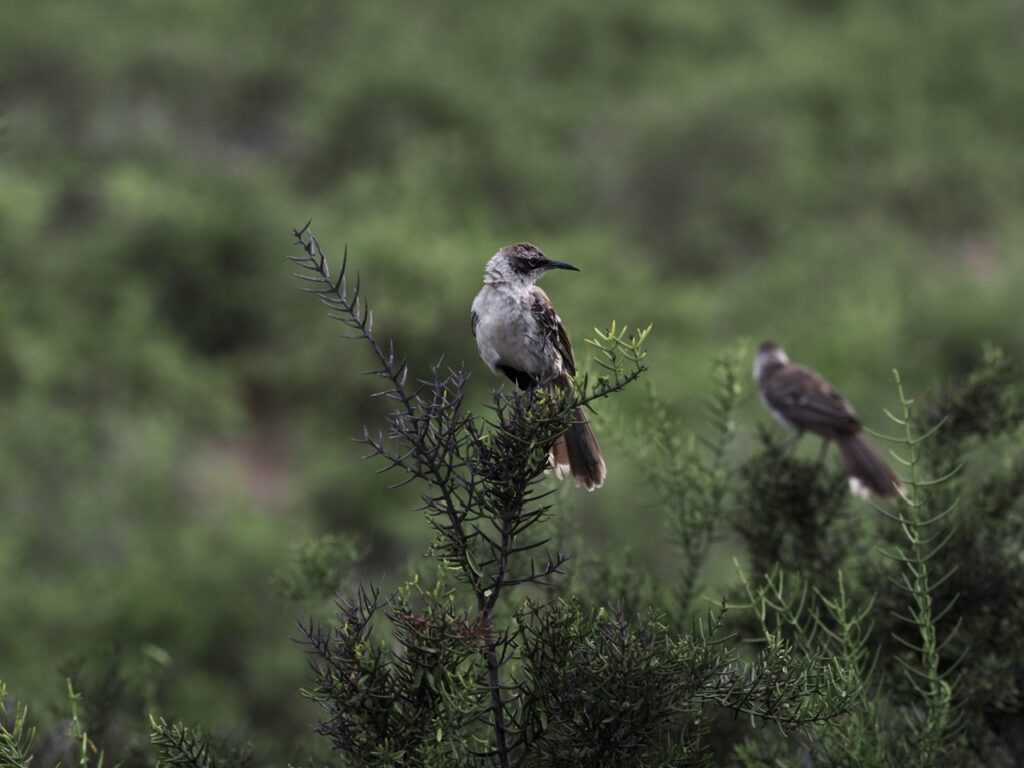

We do manage to find some land iguanas but today the hawk eludes us.

Before leaving Santa Fe, Fabian shows us one of the oldest cactus there – probably 300 years old. He suggests we all hug it and for some reason we do!

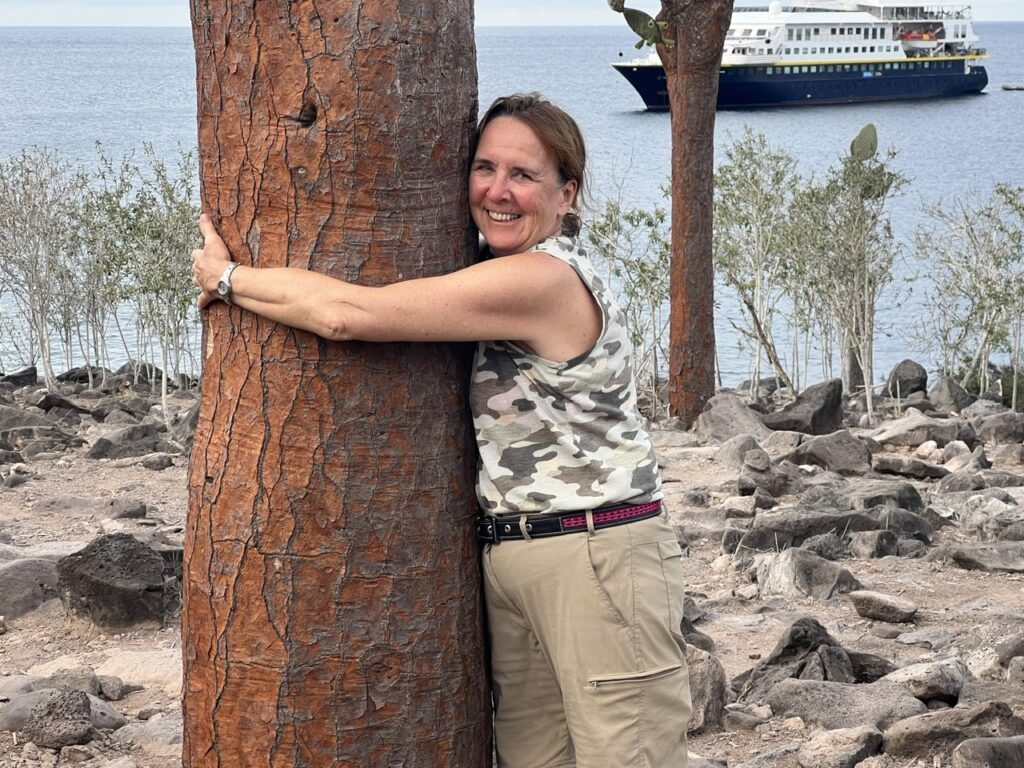
Tomorrow is the end of the North circuit so most of the guests will be departing. Just one couple will stay on board with us for the next leg. The passengers for this section have been very good company. Everyone has mixed well and I shall be sorry to say goodbye to them. We have all exchanged emails so I am sure there will be future contact.

Leave a Reply